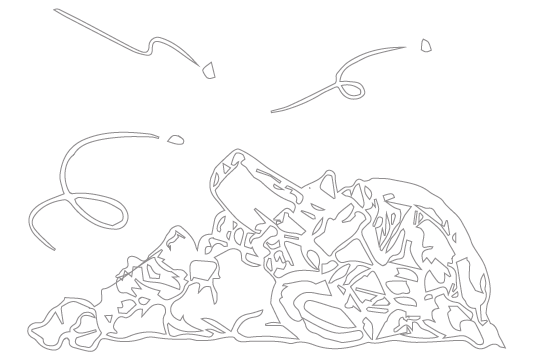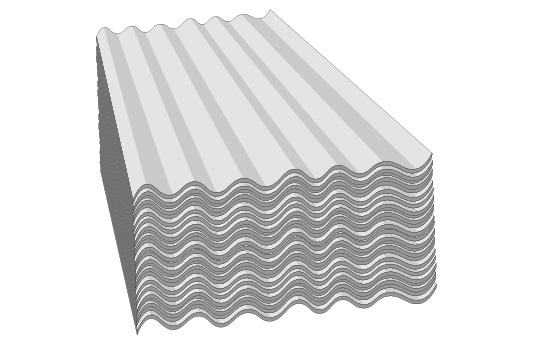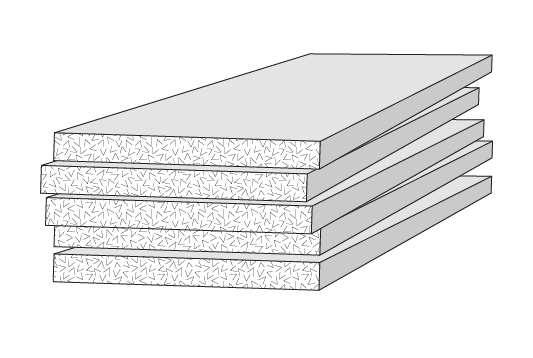Introduced by The International Living Future Institute, the Red List is a statement of harmful and dangerous materials and chemicals that are used in our construction industry. The ILFI’s mission is “to lead the transformation toward a civilisation that is socially just, culturally rich, and ecologically restorative”. With respect to this mission, the list states materials in regards to three active components; environmental pollution, bio accumulation resulting in toxic concentrations, and harm to factory and construction workers.
When it comes to the construction industry, just like any other professional field there are dangers and unknowns, this is where the “Red List” of building materials comes in. The list provides a strict and educated guide line to all designers, construction workers and those that may find themselves handling or being in the presence of such materials and chemicals.
The specific three factors aim to target and categorise the dangers in which each chemical or material present, while clearly stating the relevant harm which it inflicts. By identifying these materials and chemicals, industry professionals as well as clients are able to make well informed and intelligent decisions in the best interest of all who are relevant.
environment
The construction industry contributes to large quantities of waste and landfill each and every year. Amongst this waste we find certain materials and chemicals that are more harmful than others, and not only resist the natural urge of decomposition but harshly effect the surrounding and natural environment. The red list of building materials outlines and defines the specific products that impact negatively and the ways in which through education they can be avoided and disposed of.


handling
Construction and factory workers are often at risk to unknowns and harmful products; by identifying and acknowledging materials and chemicals that present high risk we are able to reduce future health problems. As previously seen with products containing asbestos, it may be years from use that we see health deterioration and effects. However by creating methods of reducing the use of such products we are able to progressively manage harmful chemicals and materials as our industry proceeds to grow.
accumulation
Often the harmful products present a reduced and minimal risk to environment and humans as they appear in small portions in many materials and products. However these products once disposed of find themselves in large quantities creating a greater harm and risk to both the environment and those that may be exposed to such accumulations. By assessing a materials accumulation risk and adjusting the industrial application of such a product, we are able to not only reduce the toxic concentration but provide a more sustainable method of disposing of these products.

to mention a few..
Although the list only provides a guideline and in no way prohibits the materials from use, the concept behind the idea comes from the initiative to shift and lead the built environment into a healthier and more sustainable future, whilst simultaneously altering the status quo.
Bellow is a few materials and chemicals that we’ve thought to be especially notable and relevant to our industry.. take a peek and click on the images for further info on each..
Asbestos is a mineral fiber that is used in a variety of construction materials for its strength and heat resisting capabilities. It is often found in wall insulation, vinyl floor coverings, paint compounds, roofing, heat-resistant fabrics, and automobile brakes. Exposure occurs as asbestos fibers are released into the air during use, demolition, work, building, or repair of asbestos-containing materials. Asbestos is a known human carcinogen, increasing risks of lung cancer, mesothelioma, and asbestosis.
Formaldehyde is classified by the International Agency for Research on Cancer and the State of California as a known human carcinogen. Common health effects at low levels of exposure to this volatile organic compound include irritation and sensitization, and the compound also acts as an asthma trigger. Long-term exposure is associated with nasal cancers and leukemia.
Halogenated Fire Retardants (HFRs) are a broad class of flame retardants containing chlorine or bromine that have aroused concern due to their exponential accumulation in human beings in recent years. HFRs are persistent bioaccumulative toxins, meaning that they accumulate in organisms and the broader environment, often reaching alarmingly high concentrations as they travel up the food chain. In addition, certain halogenated products have shown evidence of harm to humans and other animal species. According to the Washington State Department of Ecology, for example, the toxicity endpoints of concern for Penta-PBDE include adverse effects on neurological development, reproduction, thyroid hormone disruption and possible liver toxicity.











Recent Comments